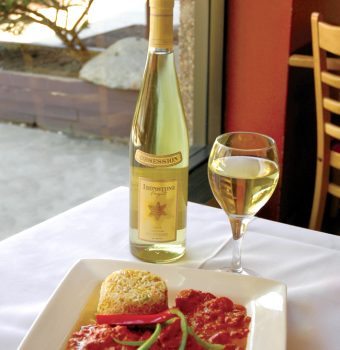
Discover the Possibilities
In the world of wine, there is a basic set of guidelines that have become general knowledge to the masses: White wine with white meat; red wine with dark meat; always start with light whites and work up to the full-bodied reds; and, when matching with Indian cuisine, choose beer.
These stereotypes helped long ago decide that wine and Indian food were not a match made in heaven. However, in recent years, a new generation of chefs, sommeliers and consumers have realized that with little effort, an Indian meal can be greatly enriched with a proper wine match.
For those of you who are used to steering your shopping cart to the beer aisle to pair a Kingfisher or Sinha with your other favourite grain staple, heading to the wine section can be intimidating. A few simple rules can go a long way.
First, when choosing a wine to match your meal, do not go with a highly tannic wine. In wine, tannin comes from stems, seeds and even the oak the wine is aged in. Tannin preserves wine and allows it to age beautifully (young red wines typically have more tannin because they need the most time in the bottle); however, too much tannin and a meal will taste astringent and overly spicy.
Rule number two is choose a wine with strong acidity. This is important because without strong acid, many wines will taste weak and watery. The acidity will help cut through many of the richer kormas and cream or yogourt-based entrées and will almost reset your palate after each sip. This is key with an Indian meal, which often has numerous main entrées and requires a fresh palate between mouthfuls.

Finally, it would be best to choose a wine with a robust fruit flavour. A strong fruit does not necessarily mean a highly sweet wine – those should be saved for summer afternoons. When it comes to Indian cuisine, a wine with a strong character is needed; be it citrus, lychee, mango, green apple or passion fruit.
There is one last rule that is often overlooked as individuals try to memorize the many dates, regions and other intricate details of pairing wine and Indian food: the person who knows what you will like best with your meal is you. Before anything else is applied, learn this. Know your loves and your dislikes in flavours and tastes, and build from that.
To provide you with a starting point, here are some wine recommendations and entrées to enjoy with them. Cheers!
White
Ironstone Vineyards Obsession 2004
CALIFORNIA
Made from the symphony grape with aromas of orange blossom, honey and rose water, this wine is a wonderful complement to Asian cuisine in general. Slightly sweet, it will best go with chili prawns or even a spicy sambre and dosa.
Cave Spring Chardonnay Musque 2003
CANADA
Crisp acidity and spicy aromatics characterize this wine, which is a clone of the better known Chardonnay grape. It lacks the oakiness but has a nice full body to it. This wine will hold its own when matched with heavier, spicier entrées like chana masala or lamb curry.
KWV Chenin Blanc 2004
SOUTH AFRICA
With an aroma of tropical fruit and just a touch of sweetness to tame the spices, this is a great wine to have with tandoori chicken or with starters like samosas and pakoras.
Red
Georges DuBoeuf Beaujolais 2004
FRANCE
A wine full of berry aromas with a light body and strong fruit flavours, this is best for those who do not like heavy reds, and it goes nicely with a light vegetable korma or coconut prawns.
Eaglehawk Shiraz 2005
AUSTRALIA
This shiraz is known for being an easy-to-drink wine with a vanilla oak and berry character. Enjoy this wine while feasting on aloo gobhi and dal makhani.
Sagramoso Valpolicella Ripasso 2003
ITALY
Full bodied and rich, made in the unique ‘Ripasso’ method from Italy, this wine is a perfect complement to spiced lamb curry.
WORDS ANISH MEHRA














































































































